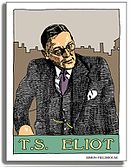
Percy Wyndham Lewis was a British writer, painter and critic. He was a co-founder of the Vorticist movement in art and edited BLAST, the literary magazine of the Vorticists.

Vorticism was a London-based modernist art movement formed in 1914 by the writer and artist Wyndham Lewis. The movement was partially inspired by Cubism and was introduced to the public by means of the publication of the Vorticist manifesto in Blast magazine. Familiar forms of representational art were rejected in favour of a geometric style that tended towards a hard-edged abstraction. Lewis proved unable to harness the talents of his disparate group of avant-garde artists; however, for a brief period Vorticism proved to be an exciting intervention and an artistic riposte to Marinetti's Futurism and the post-impressionism of Roger Fry's Omega Workshops.
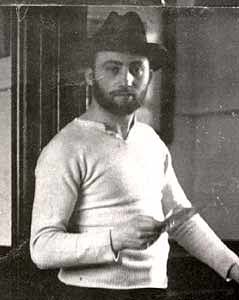
David Garshen Bomberg was a British painter, and one of the Whitechapel Boys.

The Summer Exhibition is an open art exhibition held annually by the Royal Academy in Burlington House, Piccadilly in central London, England, during the months of June, July, and August. The exhibition includes paintings, prints, drawings, sculpture, architectural designs and models, and is the largest and most popular open exhibition in the United Kingdom. It is also "the longest continuously staged exhibition of contemporary art in the world".
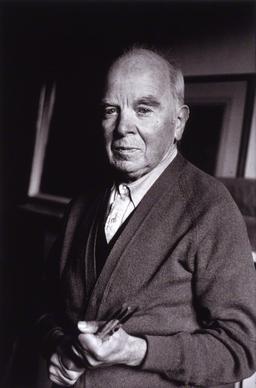
William Patrick Roberts was a British artist.

Sir William Rothenstein was an English painter, printmaker, draughtsman, lecturer, and writer on art. Though he covered many subjects – ranging from landscapes in France to representations of Jewish synagogues in London – he is perhaps best known for his work as a war artist in both world wars, his portraits, and his popular memoirs, written in the 1930s. More than two hundred of Rothenstein's portraits of famous people can be found in the National Portrait Gallery collection. The Tate Gallery also holds a large collection of his paintings, prints and drawings. Rothenstein served as Principal at the Royal College of Art from 1920 to 1935. He was knighted in 1931 for his services to art. In March 2015 'From Bradford to Benares: the Art of Sir William Rothenstein', the first major exhibition of Rothenstein's work for over forty years, opened at Bradford's Cartwright Hall Gallery, touring to the Ben Uri in London later that year.

The Royal Scottish Academy (RSA) is the country’s national academy of art. It promotes contemporary Scottish art.

Frank Cadogan Cowper was an English painter and illustrator of portraits, historical and literary scenes, also described as "The Last Pre-Raphaelite".

Edward Alexander Wadsworth was an English artist, closely associated with modernist Vorticism movement. He painted landscapes, abstracts, portraits and still-life in tempera medium and works printed using wood engraving and copper. In the First World War he was part of a team involved in the transfer of dazzle camouflage designs to ships for the Royal Navy, and continued to paint nautical themes after the war.

Dame Laura Knight was an English artist who worked in oils, watercolours, etching, engraving and drypoint. Knight was a painter in the figurative, realist tradition, who embraced English Impressionism. In her long career, Knight was among the most successful and popular painters in Britain. Her success in the male-dominated British art establishment paved the way for greater status and recognition for women artists.
Frank Graham Bell was a painter of portraits, landscapes and still-life, and a founder member of the realist Euston Road School. He was also a journalist and writer on art and the artist. Born in South Africa, he spent most of his career in Britain (1931–1943), where he died in a flying accident during World War II.
Eliot Hodgkin was an English painter, born at Purley Lodge, Purley-on-Thames, near Pangbourne, Berkshire.
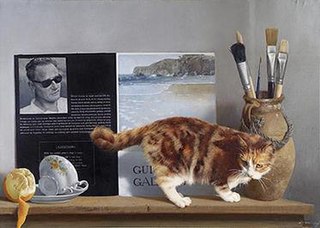
Patrick Anthony Hennessy RHA was an Irish realist painter. He was known for his highly finished still lifes, landscapes and trompe l'oeil paintings. The hallmark of his style was his carefully observed realism and his highly finished surfaces, the result of a virtuoso painting technique. He was brought up in Arbroath by his mother and step-father, his father having been killed during World War One. He attended Dundee School of Art where he met his lifelong companion, the painter Henry (Harry) Robertson Craig. Two of his paintings were accepted in 1939 at the Royal Scottish Academy for their Annual Exhibition. For the next 29 years he lived in Ireland with extended trips abroad. He was elected a member of the Royal Hibernian Academy in 1949. The Hendriks Gallery in Dublin and the Guildhall Galleries in Chicago were the main outlets for his work. In the late 1960s he moved permanently to Tangier and then, after suffering ill health, to the Algarve. He died in London.
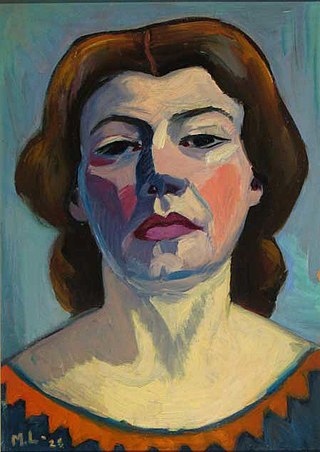
Maria Magdalena Laubser was a South African painter and printmaker. She is generally considered, along with Irma Stern, to be responsible for the introduction of Expressionism to South Africa. Her work was initially met with derision by critics but has gained wide acceptance, and now she is regarded as an exemplary and quintessentially South African artist.

Little Girl in a Blue Armchair is an 1878 oil painting by the American painter, printmaker, pastelist, and connoisseur Mary Cassatt. It is in the collection of the National Gallery of Art, Washington D.C. Edgar Degas made some changes in the painting.
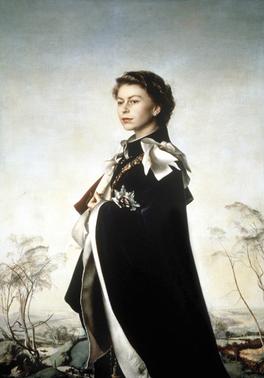
Pietro Annigoni completed a number of portraits of Queen Elizabeth II between 1954 and 1972. In 1955, he painted her for the Worshipful Company of Fishmongers and in 1969 for the National Portrait Gallery. The two portraits were united for the National Portrait Gallery's exhibition; The Queen: Art and Image, held to mark the Diamond Jubilee of Queen Elizabeth II in 2012. In 1972, Annigoni completed a circular drawing of the Queen and Prince Philip, Duke of Edinburgh to mark their silver wedding anniversary.
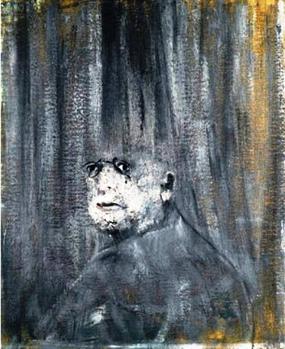
Head III is an oil painting by Francis Bacon, one of series of works made in 1949 for his first one-man exhibition at the Hanover Gallery, in London. As with the other six paintings in the series, it focuses on the disembodied head of male figure, who looks out with a penetrating gaze, but is fixed against an isolating, flat, nondescript background, while also enfolded by hazy horizontal foreground curtain-like folds which seems to function like a surrounding cage.
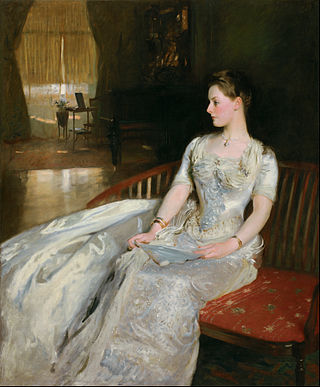
Portrait of Mrs. Cecil Wade or Portrait of a Lady is a large oil-on-canvas painting by John Singer Sargent, depicting Frances Frew Wade, a Scottish socialite. Painted in 1886, it currently hangs in the Nelson-Atkins Museum of Art in Kansas City, Missouri.
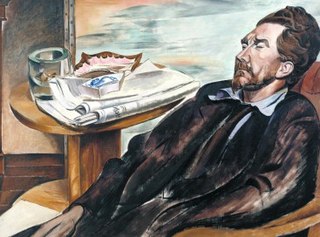
Ezra Pound is a portrait of the American poet Ezra Pound, made by his friend Wyndham Lewis in 1939.



















